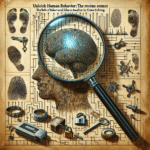
Introduction: The Power of Femininity in Modern Culture
In a world where self-expression and identity are celebrated, the concept of femininity has evolved remarkably over the past few decades. "Embodying Femininity: Fashion, Beauty, and Identity in the 21st Century" is not just a phrase; it represents a transformative journey that encompasses the rich layers of gender identity, cultural shifts, and personal expression. As we navigate this complex landscape, it becomes increasingly important to understand how fashion and beauty play pivotal roles in shaping modern femininity.
Whether it’s through the boldness of streetwear, the elegance of haute couture, or the ever-changing norms of beauty standards, the way women present themselves has significant implications for their identities. This article delves into the nuances of embodying femininity in contemporary society, exploring how fashion and beauty intersect to influence personal and collective identities.
The Evolution of Femininity in the 21st Century
Historical Context
To truly grasp what it means to embody femininity today, one must reflect on the historical context of women’s fashion and beauty. The 20th century was marked by significant milestones: from the flapper dresses of the 1920s to the power suits of the 1980s, women’s fashion has continuously adapted to political, social, and cultural shifts. The feminist movements of the past have laid the groundwork for today’s exploration of femininity.
Cultural Shifts
As we entered the 21st century, the cultural landscape began to change dramatically, influenced by globalization and social media. Traditional boundaries were shattered, and new voices emerged. The rise of intersectionality has taught us that femininity is not a monolith; it is individual, layered, and deeply affected by culture, race, and social class.
Case Study: The Rise of Instagram Influencers
In recent years, Instagram influencers have become powerful symbols of modern femininity. By curating their feeds around specific aesthetics—be it minimalist chic or maximalist opulence—these digital creators shape their identities and offer new visions of beauty. Consider the case of Aimee Song, whose blend of fashion, travel, and lifestyle has made her a key player in the contemporary fashion narrative. Aimee embodies femininity by fusing tradition with modern trends, showcasing how personal style resonates with a broad audience.
Analyzing Aimee Song’s Influence
Aimee’s content illustrates how fashion serves as both a personal expression and a wider cultural statement. By sharing her unique style journey, she empowers others to explore their femininity, illustrating the potent intersection of identity and social media in shaping modern beauty standards.
Embodying Femininity through Fashion
Fashion as Expression
Fashion is one of the most immediate ways women embody femininity in the 21st century. It serves as a canvas for self-expression, allowing women to communicate who they are without saying a word. The styles we choose can relate to our moods, aspirations, and identities, making fashion a powerful tool for embodying femininity.
Trends Shaping Modern Femininity
Athleisure: The rise of athleisure combines comfort with style, reflecting an active lifestyle. This trend signifies how femininity can embrace practicality without sacrificing aesthetics.
Sustainable Fashion: As awareness of environmental issues grows, many women are turning to sustainable fashion choices. This shift reflects values of consciousness and responsibility, redefining femininity to encompass care for the planet.
- Gender-Neutral Styles: The rise of gender-fluid clothing challenges traditional notions of femininity, allowing for a more expansive understanding of identity.
Table: Fashion Trends Impacting Femininity
| Trend | Description | Impact on Femininity |
|---|---|---|
| Athleisure | Blends athletic and casual wear | Promotes comfort and practicality |
| Sustainable Fashion | Focus on eco-friendly materials and ethical production | Aligns femininity with responsibility |
| Gender-Neutral | Clothing that transcends traditional gender norms | Expands definitions of gender and style |
Case Study: The Influence of Rhianna’s Fenty Beauty
Rihanna’s Fenty Beauty line shattered beauty norms by introducing products for all skin tones, proving that inclusivity is vital in the beauty industry. Fenty reflects a modern understanding of femininity that embraces diversity and encourages all women to embody their unique beauty.
Analyzing Fenty Beauty’s Impact
Fenty’s success demonstrates how brands can influence societal views on femininity. By delivering on the promise of diversity and inclusivity, Rihanna has positioned femininity as an empowering journey rather than a restrictive ideal. The brand celebrates individuality, inspiring other companies to re-evaluate their definitions of beauty and femininity.
Beauty Standards and Self-Perception
The Role of Media in Shaping Beauty
Media representation significantly influences the standards of beauty women encounter. With the rise of social media, these standards are constantly evolving. However, the relentless pressure to conform can be detrimental to self-perception.
Breaking Down the Beauty Myth
Embodying femininity in the 21st century means confronting unrealistic beauty standards. Movements such as #BodyPositivity encourage women to embrace their differences and redefine what beauty means to them.
Case Study: The Body Positivity Movement
The Body Positivity Movement has gained significant traction over recent years, successfully challenging the conventional beauty ideals perpetuated by media. Influencers like Tess Holliday advocate for size inclusivity, arguing that all bodies deserve to be celebrated.
Analyzing the Impact of Body Positivity
The movement highlights the idea that femininity is not about conforming to a single narrative but rather about individual acceptance and love. It encourages women to model self-love, thereby reshaping cultural perceptions of beauty.
The Intersection of Fashion, Beauty, and Identity
Personal Identity and Self-Expression
Fashion and beauty are inherently tied to identity. They allow for self-discovery, enabling women to embody their femininity in multifaceted ways, reflecting personal beliefs, cultural heritage, and social commentary.
Unpacking Cultural Identity
For many women, fashion serves as a way to connect with their cultural roots while navigating modern society. This interplay creates a rich tapestry of identities that continue to redefine femininity.
Case Study: Traditional Attire in Modern Contexts
In various cultures, traditional attire finds its way into contemporary fashion. For example, the resurgence of the qipao in fashion week showcases how heritage can be celebrated while maintaining modern relevance.
Analyzing Cultural Representation in Fashion
The integration of traditional styles into modern fashion narratives emphasizes how women can navigate their identities through clothing. It encourages a broader understanding of femininity that honors cultural legacies while embracing modernity.
The Future of Femininity: Trends and Predictions
Looking Ahead: Fashion Innovations
As we move deeper into the 21st century, fashion will continue to evolve alongside technology, sustainability, and social movements. Innovations in fabric technology and biodegradable materials will redefine the standards of both fashion and femininity.
Gender and the Future
We are also witnessing a shift in gender conversations, leading to more fluid definitions of femininity and masculinity. As society progresses, this adaptability can shape the essential aspects of our identities, allowing for richer expressions of self.
Key Predictions:
- Technological Integration: AI and AR will redefine how we shop and experiment with fashion.
- Sustainability as Norm: Brands will increasingly be held accountable for their environmental impact.
- Greater Inclusivity: The acceptance of diverse identities will continue to broaden the scope of what it means to embody femininity.
Conclusion: Embracing a New Era of Femininity
"Embodying Femininity: Fashion, Beauty, and Identity in the 21st Century" encapsulates the beauty of personal expression amidst a backdrop of societal expectation. As women navigate the intricate interplay of fashion and beauty, they are empowered to define femininity on their own terms.
Ultimately, the journey of embodying femininity involves self-discovery, body positivity, and a deep appreciation for diversity. As we celebrate the multifaceted identities of women today, we recognize that femininity is not just about appearance; it is about confidence, empowerment, and authenticity.
FAQs
1. What does it mean to embody femininity today?
Embodying femininity today involves expressing one’s identity through fashion and beauty, embracing diversity, and challenging societal norms.
2. How has social media influenced modern femininity?
Social media has democratized beauty and fashion standards, allowing greater accessibility and diverse representations of femininity.
3. What are some ways to express femininity through fashion?
Women can express femininity through clothing choices, accessories, and personal style that resonate with their identities and cultural backgrounds.
4. How can I embrace a body-positive mentality?
Embracing a body-positive mentality involves celebrating your unique body, rejecting unrealistic beauty standards, and prioritizing self-love.
5. What is the future of femininity in fashion and beauty?
The future of femininity in fashion and beauty will likely include technological innovations, increased sustainability, and a broader acceptance of diverse identities.
By understanding these key elements, one can see that embodying femininity is a personal journey, shaped by culture, history, and the inspiring stories of women who redefine beauty each day.















